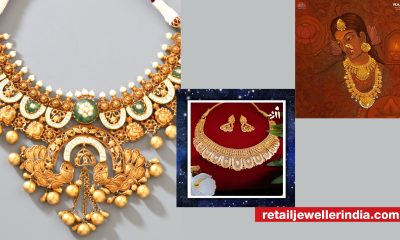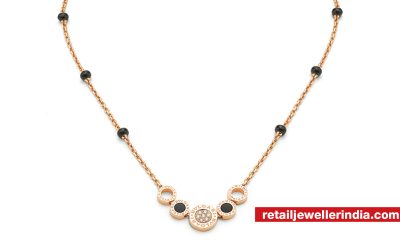RJ Market Watch
Normal jewellery collected by a woman in a married life of 25 years cannot be treated as Unexplained income – HC

Unexplained income simply means any income for which assessee do not have valid explanation about the nature or source or the assessing officer is not satisfied with the explanation provided by the assessee. Under the provisions of Income-tax Act, 1961 broadly, the term ‘unexplained income’ is dealt with sections 68, 69, 69A, 69B, 69C and 69D.
According to Section 69A, where in any financial year the assessee is found to be the owner of any money, bullion, jewellery or other valuable article and such money, bullion, jewellery or valuable article is not recorded in the books of account, if any, maintained by him for any source of income, and the assessee offers no explanation about the nature and source of acquisition of the money, bullion, jewellery or other valuable article, or the explanation offered by him is not, in the opinion of the Assessing Officer, satisfactory, the money and the value of the bullion, jewellery or other valuable article may be deemed to be the income of the assessee for such financial year.
Let us refer to the case of Ashok Chaddha Vs ITO (Delhi High Court), where the issue under consideration was whether the addition of the entire jewellery found at the time of search as undisclosed income without appreciating that the said jewellery was acquired at the time of marriage over a period of time was correct in law or not.
Facts of the Case:
- A search and seizure operation under Section 132(1) of the Income-Tax Act, 1961 was conducted in the case of Dilbagh Rai Group.
- This search covered the residential premises of the appellant as also his locker at the Union Bank of India.
- During the search, apart from some cash and jewellery, loose papers/documents were also found seized.
- An assessment order was framed by the Assessing officer (AO) assessing the income at Rs 2,64,02,210 making several additions under Section 69.
Appeal to Commissioner of Income Tax (Appeals) [CIT(A)] and Income Tax Appellate Tribunal (ITAT)
- The assessee approached the CIT (A) by way of appeal against all the additions made by the AO.
- The CIT (A) disposed of the appeals by consolidated order in respect of all these assessment years and deleted the all the additions except two namely addition of Rs 3,87,364 on account of jewellery found during the search and Rs 50,000 on account of receipt of booking at Tivoli Garden.
- The assessee challenged the order of the CIT (A) by filing an appeal before the ITAT.
- In the ITAT appeal the two additions sustained by the CIT (A) were affirmed by the ITAT as well.
- Aggrieved with the order of the ITAT, assessee appealed before the High Court (HC)
Submissions before the High Court (HC)
- At the time of arguments, the appellant did not press about the addition of Rs 50,000 on account of receipt of Rs. 50,000 at Tivoli Garden. Therefore, the questions of law formulated pertained to addition of Rs 3,87,364 on account of jewellery.
- During the course of search, jewellery weighing 906.900 grams of the value amounting to Rs 6,93,582 was found.
- The appellant’s explanation was that he was married about 25 years back and the jewellery comprised “stree dhan” of his wife and other small items jewellery subsequently purchased and accumulated over the years.
- However, the AO did not accept the above explanation on the ground that documentary evidence regarding family status and their financial position was not furnished by the appellant.
- The AO accepted 400 grams of jewellery as explained and treated jewellery amounting to 506.900 grams as unexplained and made an adhoc addition of Rs 3,87,364 under Section 69A working on unexplained jewellery, by applying average rate (506/900 x 6,93,582) of the total jewellery found.
- The CIT (A) confirmed this addition stating that the AO was fair in accepting the part of jewellery as unexplained. The ITAT has also endorsed the aforesaid view.
- Appellant submitted that there was no basis for the AO to accept the ownership of the gold jewellery to the extent of 400 grams only as “reasonable allowance” and treat the remaining jewellery of Rs. 506.900 as unexplained.
- Also, another fact ignored by the AO as well as other authorities was that as the department had conducted a search of all the financial dealings which were within his knowledge and no paper or document was found to indicate that this jewellery belonged to the appellant and that it was undisclosed income of the relevant assessment year.
- In a search operation, no scope was left with the tax department to make addition on subjective guess work, conjectures and surmises.
- It was also argued that jewellery was “stree dhan” of the assessee’s wife, evidenced in the form of declaration which was furnished by mother-in-law of the assessee stating that she had given the jewellery in question to her daughter.
- It was a normal custom for a woman to receive jewellery in the form of marriage and other occasions such as birth of a child. The assessee had been married more than 25-30 years and acquisition of the jewellery of 906.900 grams could not be treated as excessive.
- Respondent on the other hand relied upon the reasoning given by the authorities below.
Observations of the High Court (HC)
- After considering the aforesaid submissions HC was of the view that addition made was totally arbitrary and was not founded on any cogent basis or evidence.
- The jewellery in question is not very substantial considering the fact that the assessee was married for more than 25-30 years.
- The assessee was correct in her submission that it was a normal custom for woman to receive jewellery in the form of “stree dhan” or on other occasions such as birth of a child etc.
- Collecting jewellery of 906.900 grams by a woman in a married life of 25-30 years was normal.
- Furthermore, there was no valid and/or proper yardstick adopted by the AO to treat only 400 grams as “reasonable allowance” and treat the other as “unexplained”.
- Matter would have been different if the quantum and value of the jewellery found was substantial.
- Therefore, the HC was of the opinion that the findings of the Tribunal were totally perverse and far from the realities of life.
- Hence, the HC answered the question in favour of the assessee and against the revenue by deleting the addition of RS 3,87,364.
In conclusion, addition under Section 69A cannot be based on subjective guesswork. There should be a valid and substantial reasoning for the same. Normal jewellery collected by a woman in a married life of 25-30 years cannot be treated as Unexplained income to be added under Section 69A.
Courtesy: Faceless Compliance






 Daily News1 month ago
Daily News1 month agoBvlgari adds designs to its pathbreaking mangalsutra collection ahead of wedding season

 Daily News4 weeks ago
Daily News4 weeks agoTrent, a TATA subsidiary, launches lab-grown diamond brand ‘Pome,’ shares surge 7.67%

 Daily News4 days ago
Daily News4 days agoSavji Dholakia’s visionary water conservation project ‘Bharatmata Sarovar’ reinforces commitment to sustainability

 Exclusive2 weeks ago
Exclusive2 weeks agoFirefly Diamonds makes a bold entry into Mumbai’s luxury retail scene with R City Mall store






















